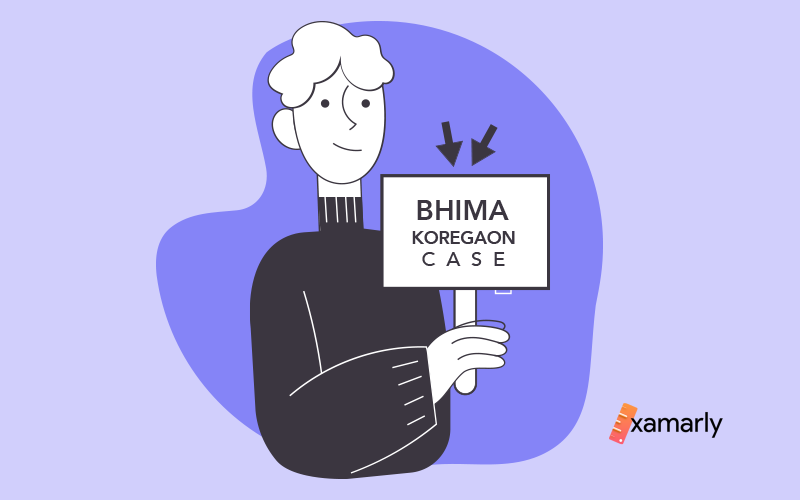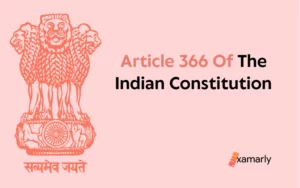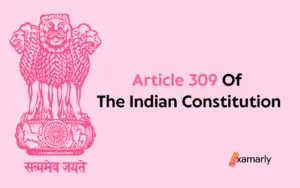The Bhima Koregaon case has made headlines as several human rights activists were ordered by the Supreme Court to be released.
On January 1, 2018, violence erupted at commemorations of the Battle of Bhima Koregaon’s bicentennial anniversary.
The Bhima Koregaon case is about the arrest of several human rights activists because of the violence that occurred at the annual celebrations on that historic day.
According to the Pune police, the first arrests occurred on June 6, 2018. Rona Wilson, Sudhir Dhawale, Surendra Gadling, Mahesh Raut, and Shoma Sen were all apprehended. This case has also affected many others in India, besides the five people.
Bhima Koregaon’s victory is a symbol of Dalit pride. British East India Company with Mahar Dalit soldiers defeated the Peshwas.
A number of Mahar Dalit soldiers were also killed in this battle. The memorial obelisk commemorates the soldiers. The names of these soldiers are inscribed on the obelisk that stands at Koregaon.
This article on Bhima Koregaon Case will be helpful to the UPSC aspirants in their UPSC exam preparation.
The Battle of Bhima Koregaon
- The battle at Bhima-Koregaon was a major battle fought between the British East India Company and the Peshwa faction of the Maratha Confederation.
- The battle took place at Bhima Koregaon village, which is located in the Pune district of Maharashtra. The Peshwa Baji Rao II-led Maratha army was en route to assault the British East India Company’s base at Pune. The Battle of Koregaon Bhima was sparked by 800 men challenging this Maratha force on the march.
- The battle took place on January 1, 1818.
- Peshwa Bajirao II had an army of 20,000 cavalry soldiers and 8,000 infantry soldiers. Peshwas had a huge advantage over the British army.
- Trimbakji Dengle, Bapu Gokhale, and Appa Desai were among the other notable Marathas who led their forces in the Battle of Bhima-Koregaon.
- The majority of historians agree the British army consisted of 500 infantry and 300 cavalries. A large number of them were Mahars.
- There were 24 artillery cannons in the British East India Company as well.
- The British East India Company was under the leadership of Captain Francis F. Staunton.
- This was the biggest subcaste among the Dalits. But the Mahars were determined not to lose. The battle ended in defeat for the Peshwas.
- The conflict was a part of the Third Anglo-Maratha War, a string of conflicts that resulted in the British East India Company taking control of almost all of Western, Central, and Southern India after the Peshwa authority was overthrown.
- The Mahars were viewed as untouchables in the current caste-based society. The Battle of Bhima Koregaon has become legendary among India’s Scheduled Castes.
In commemoration of their success, the British created a square-shaped pillar from stone, known as Vijay Sthamb (victory pillar), and engraved the names of their valiant soldiers. In 1851, they honoured the soldiers with medals. The battle also marked the end of the Peshwa System.
What Happened at Bhima Koregaon on January 1, 2018?
On January 1, 2018, the 200th anniversary of the Battle at Bhima Koregaon, violence broke out in Bhima Koregaon. Thousands of Dalits came together to commemorate a historical event.
However, clashes broke out between the two groups. Although the violence happened on January 1st, the base is said to have been prepared a day before. A meeting by the name of Elgar Parishad was held.
It is said that members of around 250 far-left groups were present there and inflammatory speeches were given. One other issue was the tension between two groups of Mahars and Marathas about who conducted the last rites of Sambhaji Maharaj.
The Maratha faction never believed in the story that Govind Gaikwad(Mahar) had performed the last rites of Sambhaji Maharaj. Tensions were high days prior to the 1st January commemoration of the defeat of Peshwa Bajirao II.
According to police reports, on 1st January, violence erupted when groups bearing saffron flags joined the scene and made inflammatory speeches, which led to the violent clashes between Dalit and Maratha groups, resulting in the death of at least one person and injuries to several others.
The complicated nature of the police’s investigation into violence has caused many problems. The police initially focused on the case and their actions did not match the findings of the probe.
The government tried to justify the new arrests by using an international angle. The suspects were believed to have been close links to Maoists who were reportedly involved in the incident. Milind Teltumbde was also involved in the incident.
The discourse surrounding the Bhima Koregaon struggle has been radically changed by the events of January 1, 2018. While the incident sparked a large number of social media posts and protests, the ensuing riots have triggered widespread suspicion and fear among the Bahujan community.
What is the Result of the Bhima Koregaon Case?
A large group of Bahujan groups, including the Elgar Parishad, staged an event on 31st December 2017 to commemorate the infamous Bhima Koregaon battle.
The gathering took place in the Shaniwar Wada Fort of Pune. The conference was organized by the Elgar Parishad, an umbrella group of 250 far-left Dalit organizations.
Many speakers at the conference were retired judges and others including Jignesh Mevani, Umar Khalid, Soni Sori, and Prakash Ambedkar.
The police claimed that these activists made provocative speeches at a meeting of the Elgar Parishad in Pune on December 31. These speeches were allegedly provocative and led to violence in Bhima Koregaon on January 1.
There has been rioting, stone-pelting, and burning in and around Bhima-Koregaon. Six members of the Kabir Kala Manch were named in the police report.
The case has moved forward to the point where Section 120B of the IPC has been inserted. It’s hard to predict how the case will turn out, but it’s important to remember that it was part of a larger conspiracy.
After the Bhima Koregaon incident, the police began arresting human rights activists. They were accused of attempting to plot a “Rajiv Gandhi-style assassination” of Prime Minister Narendra Modi.
In February 2018, the Maharashtra government appointed a fact-finding commission. The commission included former chief justice JN Patel and Sumit Mullick.
Pune police have recorded not one but two charge sheets (dated November 15, 2018, and a supplemental charge sheet) in relation to the same incident (February 21, 2019). The arrests that took place happened in a phased manner.
There were originally five arrests in June 2018, which included Sudhir Dhawale, Human Rights Lawyer Surendra Gadling, Land rights activist Mahesh Raut, Shoma Sen, and Rona Wilson.
Arun Ferreira, a tribal rights activist; Sudha Bharadwaj, a lawyer and activist; Varavara Rao; and Vernon Gonsalves, another activist; were all arrested in August of 2018.
Some of them were placed under house arrest following the interventions of the Bombay High Court and the Supreme Court. Subsequently, Father Stan Swamy, Anti-caste activist Ramesh Gaichor, and Anand Teltumbde were in the Koregaon-Bhima probe.
Some of the imprisoned campaigners have been waiting over two years to be tried. The men previously accused of starting the violence, Sambhaji Bhide, a former member of the RSS and the founder of Shiv Pratishthan, and Milind Ekbote, president of Dharmaveer Sambhaji Maharaj Pratishthan, were both released without taking any severe measures.
Ekbote was initially sent behind bars. Later, he was freed on bail. For the record, the police never arrested Bhide.
The case has prompted a flurry of responses on social media.
The Significance of Bhima Koregaon in Indian Nationalism
In the history of the Indian liberation movement, it is important to mention the Battle of Bhima Koregaon. It is a key milestone in the emergence of Indian nationalism.
Peshwa Baji Rao II and the British fought this battle. This battle was fought on the lands of Koregaon in Maharashtra.
The incident is significant to Dalits and Mahars. This battle is considered a victory by the Mahars over the Peshwa Authority.
One large percentage of Shivaji’s army came from the Mahars. They were a group of untouchables. The Mahars suffered mistreatment from the Brahmins.
It is alleged that when the Mahars offered their services to Peshwa Bajirao II, they were denied entry because of their untouchability. However, they were eventually recruited by the British to become an integral part of their military forces.
Many Dalit thinkers still consider the Koregaon battle an important historical event. In the success of the East India Company, the Mahar people, who were considered untouchables, in the Anglo–Maratha war played an important role. Because many of the soldiers of this battle were Mahars, it also symbolizes pride among Dalits.
Many Mahar soldiers died in battle. B.R. Ambedkar visited the memorial obelisk of the Koregaon on 1st January 1927. The names of many of the soldiers who died during this battle were inscribed on the obelisk.
Conclusion
Bhima Koregaon Case is a sign of renewed political aspiration for the Dalit movement. There can be many perspectives from which the case can be seen.
There is the perspective of the government that says that many people arrested in the case were engrossed in a plan to assassinate the Prime Minister of India.
Then there is the other side that says the people arrested are the ones who openly oppose the government. The case is yet to come to a conclusion. Whatever happens, no innocent should be punished and the guilty should never be left out.
FAQs on Bhima Koregaon
What is the Bhima Koregaon case?
The Bhima Koregaon case refers to the violence that took place on January 1, 2018, near the village of Bhima Koregaon in Maharashtra, India.
The incident involved clashes between two groups during an annual celebration, leading to the arrest of several activists and intellectuals on charges of inciting violence and having Maoist links.
Why did the Battle of Bhima Koregaon Happen?
The Marathas were on their way to attack the Britishers in Pune. They were challenged on their by the British East India Company Army.
The British Army was led by Captain Francis F. Staunton. Hence the battle of Bhima Koregaon happened. It was part of the third Maratha-Anglo war.
Why is Bhima Koregaon Famous?
Bhima Koregaon is famous for the battle of Bhima Koregaon which was fought in the 1800s between the East India Company and the Army of Peshwa Bajiro II. The place has a commemorative pillar signifying the victory of the British East India Company and Mahars.
The place came in news again in 2018 when on the 200th anniversary of the victory a violent clash emerged between two groups.
Who was arrested in the Bhima Koregaon case?
Several activists and intellectuals were arrested in connection with the Bhima Koregaon case, including Sudhir Dhawale, Rona Wilson, Surendra Gadling, Shoma Sen, Mahesh Raut, and Vernon Gonsalves.
What is the significance of Bhima Koregaon?
Bhima Koregaon is significant as it marks the victory of a small British-led army of Dalits (formerly known as “untouchables”) over the upper-caste Maratha empire in 1818.
It is considered a symbol of Dalit pride and is commemorated every year with a gathering at the war memorial in Bhima Koregaon.






